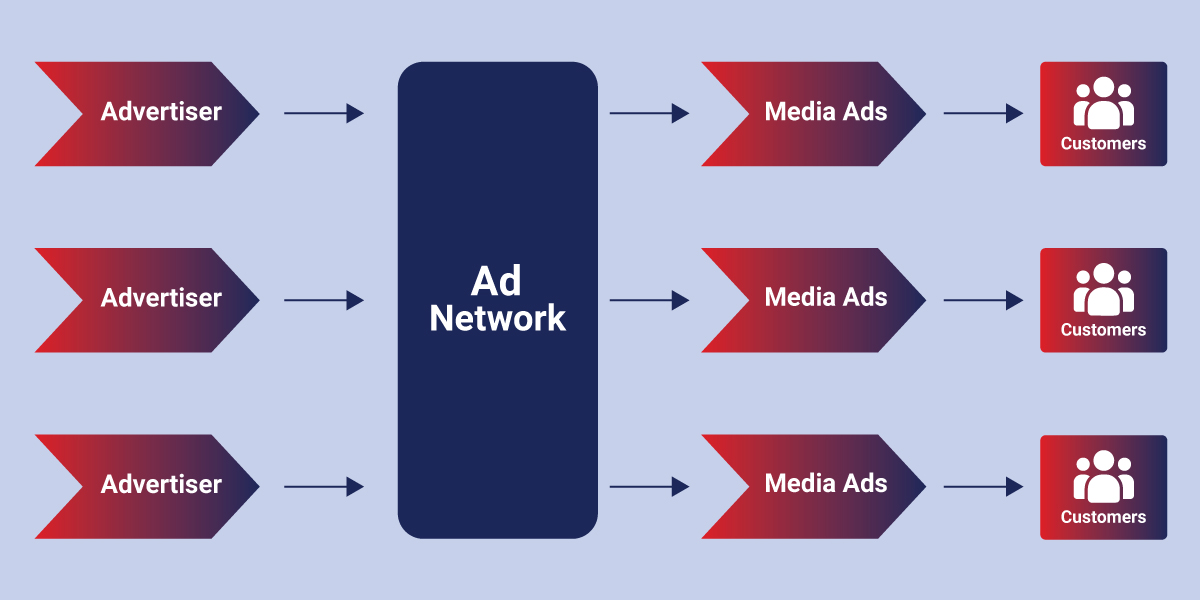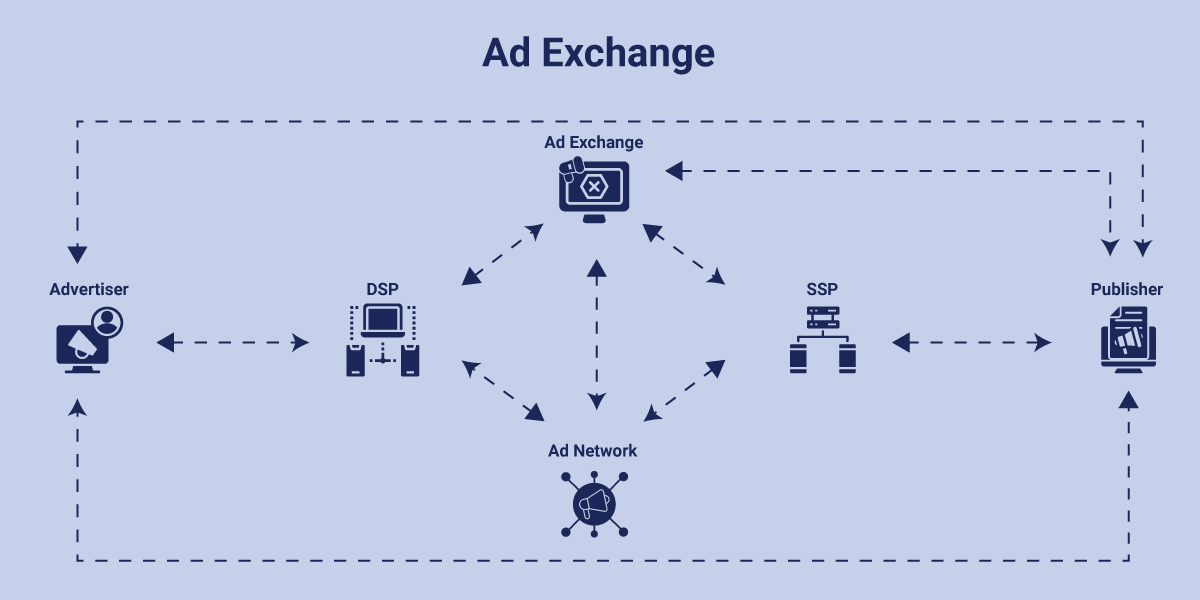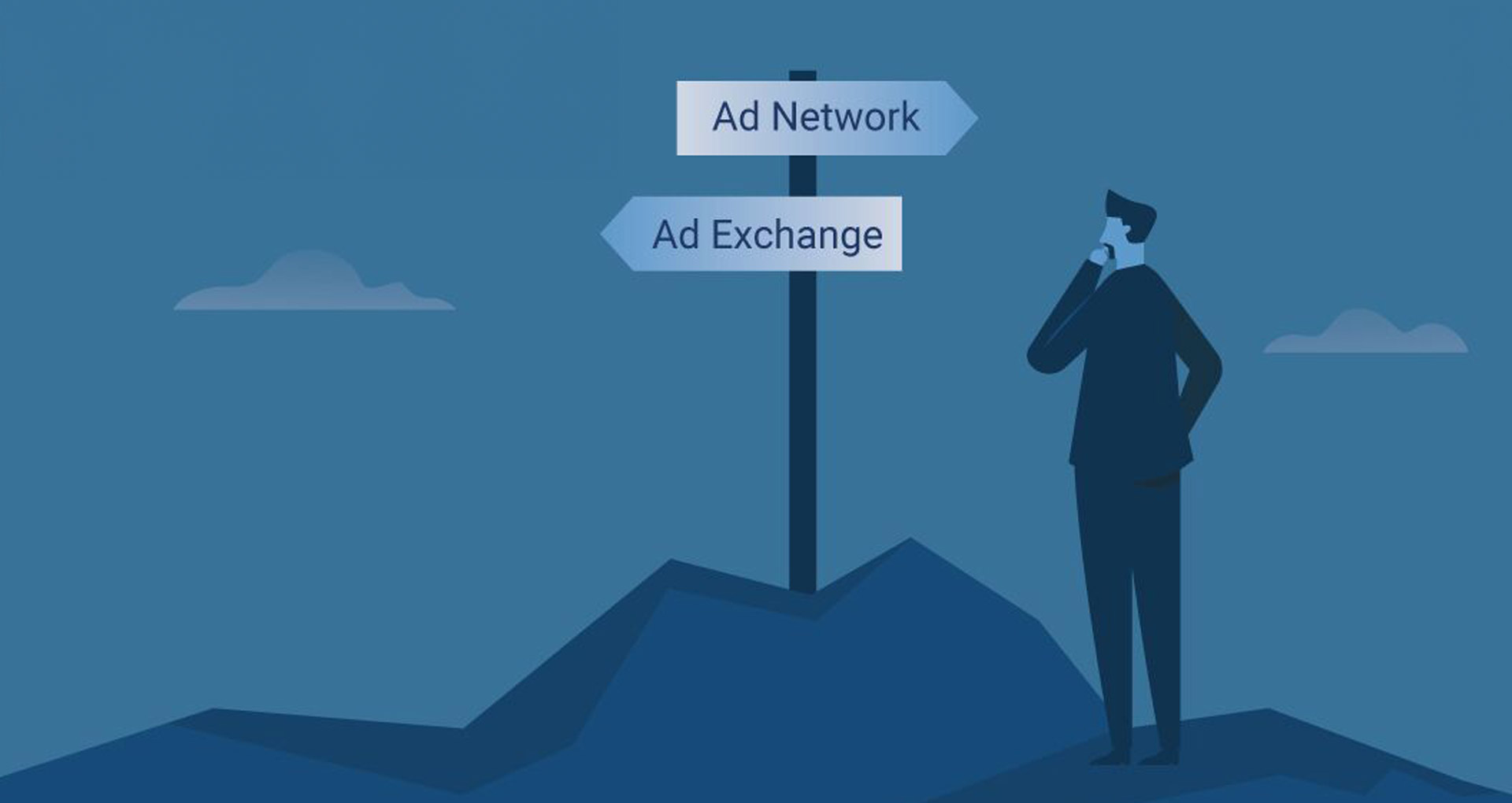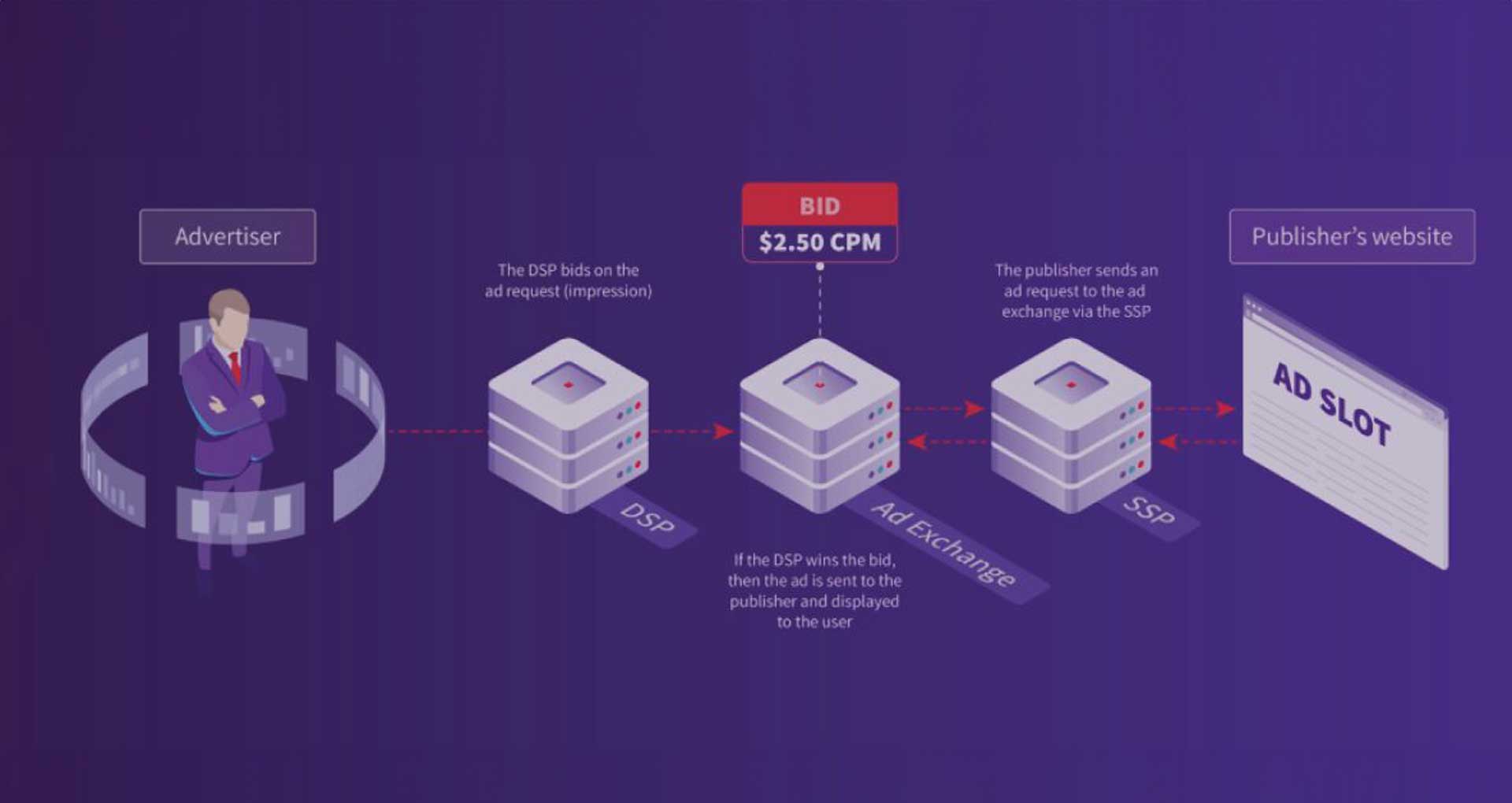Ad networks and ad exchanges are the core components that drive programmatic advertising and create a seamless path for connecting publishers and advertisers for media trading. Programmatic advertising fosters dynamic and profitable ad ecosystem by leveraging data, technology, and analytics for highly targeted ad campaigns. As per Statista, programmatic ad sales were at $546 billion in 2023 and are expected to grow to nearly $780 billion by 2028 [1].
Among the number of platforms and software solutions that are interconnected to conduct programmatic ad processes, ad exchange and ad network are interchangeable components, generally mistaken by entities. However, in the ad network vs ad exchange debate, these two follow distinct approaches and play equally important roles.
In this blog, we will explore what is an ad exchange vs ad network, their role and benefits, along with a detailed comparison.
What is an Ad Network?
An ad network serves as a matchmaking platform between publishers and advertisers by bringing together a mass of publishers – websites, apps, etc. that have ad space’ and advertisers – ‘who want to display their ads.’ Ad network platforms handled by organizations play a key role in digital media trade marketing by collecting a large number of ad placements from various publishers and making them accessible to advertisers. Thus, they forge ahead an effective marketplace for buying and selling ad inventory.
This seamless application fosters direct collaboration and provides an easy & reliable way of selling ad inventory. It facilitates end-to-end financial transactions to ensure smooth and secure exchanges between publishers and advertisers.
Benefits of Ad Networks
- Automated Inventory Matching: Ad networks offer both publishers and advertisers many options for establishing fruitful connections and achieving their respective objectives. As a mediator, the operating ad network software allows advertisers to access the most suitable ad inventory at reasonable prices while enabling publishers to secure the best possible deals for ad selling.
- Transparent Financial Transaction & Higher Reach: Ad networks make it easier for advertisers to publish ads without worrying too much. They also help advertisers get maximum reach. On the other hand, with lesser efforts required from the publisher to generate revenue, the ad network ensures instant financial transactions to allow advertisers to use ad space. Thus ensuring transparent end-to-end financial transactions.
- Streamlined Buying Process: Ad networks operate on a fixed-rate approach along with automated media buying. This method eliminates the stress for both advertisers and publishers by removing the need to negotiate prices, which saves time and effort and requires no sales experience.
How Do Ad Networks Function?

In the world of online advertising, ad networks function as an efficient intermediary by making connections between advertisers and publishers to sell and buy valuable ad inventory. Here is a step-by-step process of how ad networks function:
#1 Firstly, it compiles a list of publishers willing to sell their available or unsold ad inventory, as well as advertisers looking to run their ad campaigns by purchasing inventory.
#2 Advertisers can create custom ad campaigns by adding multiple parameters, including demographics such as age, gender, location, interests, keywords, devices, etc., directly from the ad network’s campaign management panel.
#3 Based on the advertiser’s requirements, the ad network initiates the packaging step to approach buyers who are part of the network.
#4 When an advertiser runs a campaign, they provide details about who they want to reach, how much they want to spend, and how often their ads should appear. On the other hand, publishers add ad tags from the ad network to their websites to display these ads to their visitors.
#5 In the final stage, after the ad network matches the advertiser’s demand with the publisher’s supply, it sends the ad details along with creatives to the publisher.
What is an Ad Exchange?
The ad exchange is a programmatic marketplace that enables publishers and advertisers to buy and sell ad inventory in real time using a bidding system. It connects the supply-side platform (publisher) and demand-side platform (advertiser), along with multiple ad exchanges (operated by ad agencies), and performs auctions based on RTB system to streamline ad exchange process.
In the ad exchange marketplace, ad inventory buying and selling happen entirely with automation. This automation helps cut down unnecessary efforts through effectively concluding procedures in milliseconds, with no biases & genuine allocation of ad space based on impression and previous performance.
Benefits of Ad Exchanges
- Precise Ad Targeting with Massive Reach: The ad exchange digital marketplace allows hyper-personalized targeting features that enable advertisers to reach the right segment of users across a wider range of websites and apps. This targeting is based on demographics, interests, and browsing behavior, showcasing ads to customers who are genuinely interested in the offered products/services.
- Real-Time Efficiency and Cost Optimization: Ad exchanges use real-time bidding technology, which means buying and selling media based on impressions through an auction-like system. Advertisers only pay for the impressions they receive, and they can set their bids based on various factors like target audience and campaign goals. This real-time process allows for efficient ad placement and plays a key role in cost optimization compared to traditional fixed-rate ad placements.
- Data-Driven Optimization and Transparency: Ad exchanges offer far better features and functionality than just allowing advertisers to place ads. They provide advertisers with performance metrics like clicks, conversion rate, engagement rate, etc. Their built-in advanced reporting allows advertisers to easily visualize their campaign performance, making it easy to analyze and identify areas for improvement.
How Do Ad Exchanges Function?

- The entire process starts with the publisher. Once publishers mark their inventory available on the supply-side platform along with required details like placement, pricing floor, and audience, the SSP proceeds to make connections with multiple ad exchanges.
- On the other hand, the demand-side platform is operated by advertisers to gather ad exchange data. They also add data such as ad details, targeted audience, demographic details, and many others to the DSP to evaluate further for the bidding process.
- Once users land/load the publisher’s digital platform (website, mobile apps, etc.), an ad request is triggered and passed via an ad server to connect with the ad exchange or SSP.
- Based on the matching request, DSPs participate in the real-time bidding process conducted by the ad exchange. Afterward, the ad exchange evaluates bids to conclude with the winning DSP.
- The ad creative linked with the highest bidding or winning DSP is placed on the publisher’s available inventory.
Ad Network vs Ad Exchange: Key Differences
| Feature | Ad Network | Ad Exchange |
| Role | Intermediary/Matchmaker | Programmatic Marketplace |
| Users | Publishers, advertisers, and advertisement agencies | Publishers, advertisers, advertising agencies, ad networks, other ad exchanges, DSPs, SSPs |
| Inventory | Pre-assembled publisher & advertiser network. Provide a premium and first-time selling inventory | Open marketplace with various participants (ad networks, DSPs, SSPs). There is no guarantee of fresh inventory. It may include leftover ad space. |
| Pricing | Fixed pricing after negotiation | Real-time bidding, dynamic pricing |
| Transparency | Lower transparency, limited control over who sees ads | With Higher transparency, publishers can set targeting criteria, including frequency capping |
| Targeting | Managed by ad network | More control for publishers over targeting options |
| Campaign Optimization | Require enough time to reflect changes | Real-time reflection of changes |
| Control | Less control for publishers | Offer better control to both publishers and advertisers |
| Technology | Often include simple setup steps | More complex technology infrastructure |
| Examples | Google Adsense, AppLovin | Google Ad Exchange (AdX),Microsoft Advertising Exchange |
Ad Network and Ad Exchange: A Detailed Comparison
Both an ad exchange and ad network serve the identical purpose of facilitating the seamless process of media trading; they operate in completely different ways. Let’s now take a look at the differences between ad network and ad exchange based on key parameters.
Role:
Ad exchange: They function as intermediaries and manage the relationship between advertisers and platform owners. Ad networks aggregate multiple ad spaces from publishers and add them to the inventory pool. Meanwhile, with ad campaigns and budgets by advertisers, ad networks create the most suitable and win-win matchmaking.
Ad exchange: Functioning as an open digital marketplace, ad exchanges allow publishers and advertisers to collaborate. Ad exchanges enable publishers to make deals for ad slots with advertisers through a successful real-time bidding system. This technology-powered platform automates ad placement deals.
Structure:
Ad network: The structure of an ad network is more manual and curated. It operates as a centralized company or entity responsible for overseeing a network of publishers. This involves selecting, organizing, and looking after the right available ad space based on parameters like demographics, interests, and user preferences provided by advertisers. Additionally, ad networks undertake the role of negotiating ad rates with publishers and managing billing and financial transactions between promoters and platform owners.
Ad Exchange: The structure of an ad exchange is quite diverse and decentralized compared to an ad network. It offers a technology-driven open marketplace for entities such as publishers, advertisers, ad networks, supply-side platforms, demand-side platforms, etc. It does not hold any responsibility for managing publishers or inventory. Instead, within a real-time auction environment, publishers can make media space available through a supply-side platform for advertisers. Advertisers can bid through a demand-side platform, and pricing is set dynamically based on demand.
Transparency:
Ad network: Ad networks lack transparency for both advertisers and publishers. Neither, the advertisers nor the publishers have full visibility into various aspects of the process. For example, advertisers are often unaware of the specifics of their spending and where their ads will be displayed. Similarly, publishers have limited insight into the advertisers and lack control over their inventory.
Ad exchange: In contrast, ad exchanges offer end-to-end visibility to advertisers and publishers regarding inventory and transactions. During the ad placement deals, publishers know the cost and which ad inventory is being sold, and advertisers are informed about the ad inventory they’ve purchased. Ultimately, both parties are aware of each other.
Inventory Management:
Ad network: Compared to ad exchanges, ad networks have more control over inventory management to achieve the aim of providing high-quality and brand-safe premium ad placements to advertisers, ensuring better outcomes.
Ad exchange: Ad exchanges offer a more open and real-time marketplace to publishers and advertisers. So, a variety of ad space is accessible, which also includes leftover ad space, but with zero guarantee of quality.
Pricing:
Ad network: This follows the approach of a fixed pricing model, including cost-per-thousand-impression (CPM) and cost-per-click (CPC). CPM and CPC rates are negotiated between the publisher and the ad network.
Ad exchange: This relies on a real-time bidding platform where competition happens amongst advertisers. During the auction, prices keep fluctuating based on demand. So, ad exchanges have zero control over the pricing parameter of ad placement deals.
Ad Campaign Optimization:
Ad network: In the comparison between ad networks and ad exchanges, ad campaign optimization is a key factor. Ad networks offer limited control over an ad campaign. They allow optimization on basic parameters like impressions, clicks, conversions, etc. Also, refinement of limited targeting options takes a while.
Ad exchange: Technological integration, such as Data Analytics and AI/ML, has transformed ad exchanges into more data-driven processes. It empowers advertisers to efficiently track the performance of ad campaigns and optimize them immediately.
Ad Network vs Ad Exchange – What to Choose When?
Ad networks and ad exchange have both proven to be dominating pillars of programmatic advertising. So, there is no exact answer on which one to choose; it completely depends on the specific needs and advertising goal. Both function to achieve the same purpose of streamlining the media buying and selling process by connecting advertisers (demanders) and publishers (suppliers).
If you are an advertiser looking for a broader reach and someone who doesn’t want to make much effort regarding ad campaign optimization, performance, and pricing but is looking for premium ad placement, then an ad network can be a convenient choice for you.
On the other hand, if you prioritize granular targeting, an effective ad campaign that offers better control over campaign management and optimization through great transparency on performance is what you seek, then an ad exchange is the go-to solution for you.
How can Rishabh Software Help You with Ad Exchange and Ad Network?
We are a strategic development partner for ad tech organizations looking to design, build, and maintain an RTB-compliant custom solution with omnichannel capabilities. With years of experience in programmatic CTV advertising, we specialize in building custom ad exchanges and developing DSP, SSP, ad networks, RTB and Ad server software solutions. With these modern ad tech solutions, we ensure your ad delivery infrastructure is optimized for efficiency, effectiveness, and maximum revenue generation. We offer a comprehensive suite of AdTech software development services that cater to publishers, ad networks, and advertisers of all sizes and across geographies.
Frequently Asked Questions
Q: What are the types of Ad exchanges?
A: There are three popular types of ad exchanges, as mentioned below:
- Open ad exchange
- Private ad exchange
- Preferred deal
Q: What are the types of Ad networks?
A: There are four major types of ad networks. Here is the list:
- Vertical networks
- Premium networks
- Inventory-specific networks
- Targeted network
Footnotes:
1. https://www.statista.com/statistics/275806/programmatic-spending-worldwide/











 30 Min
30 Min


